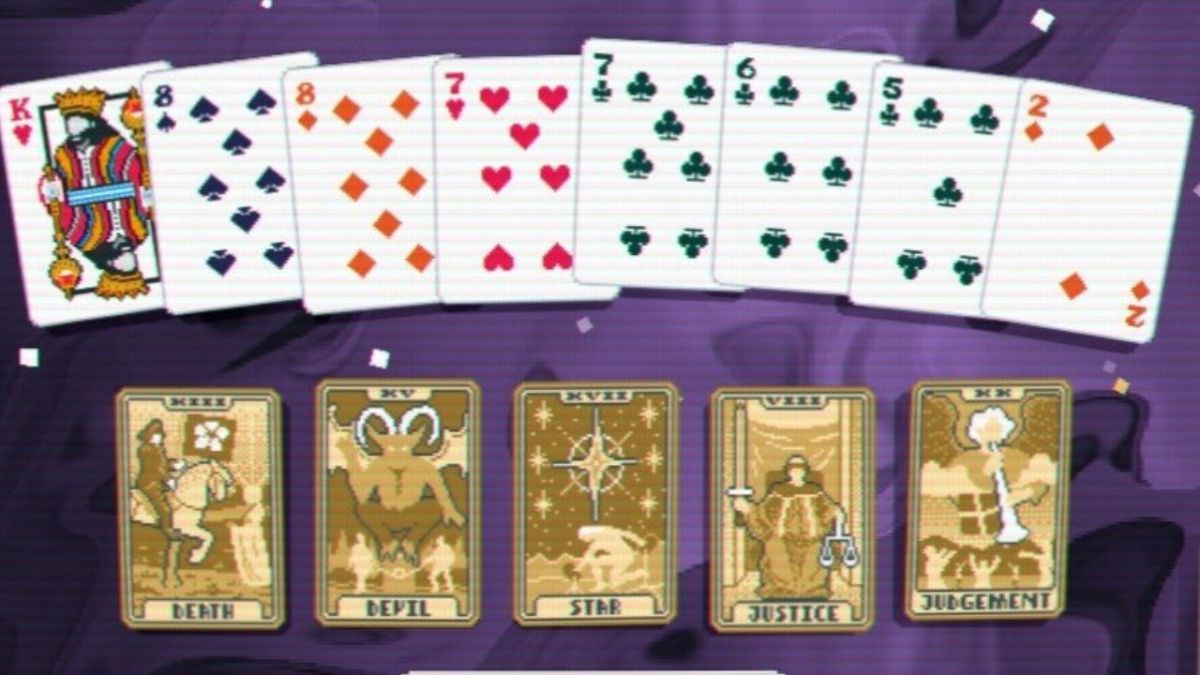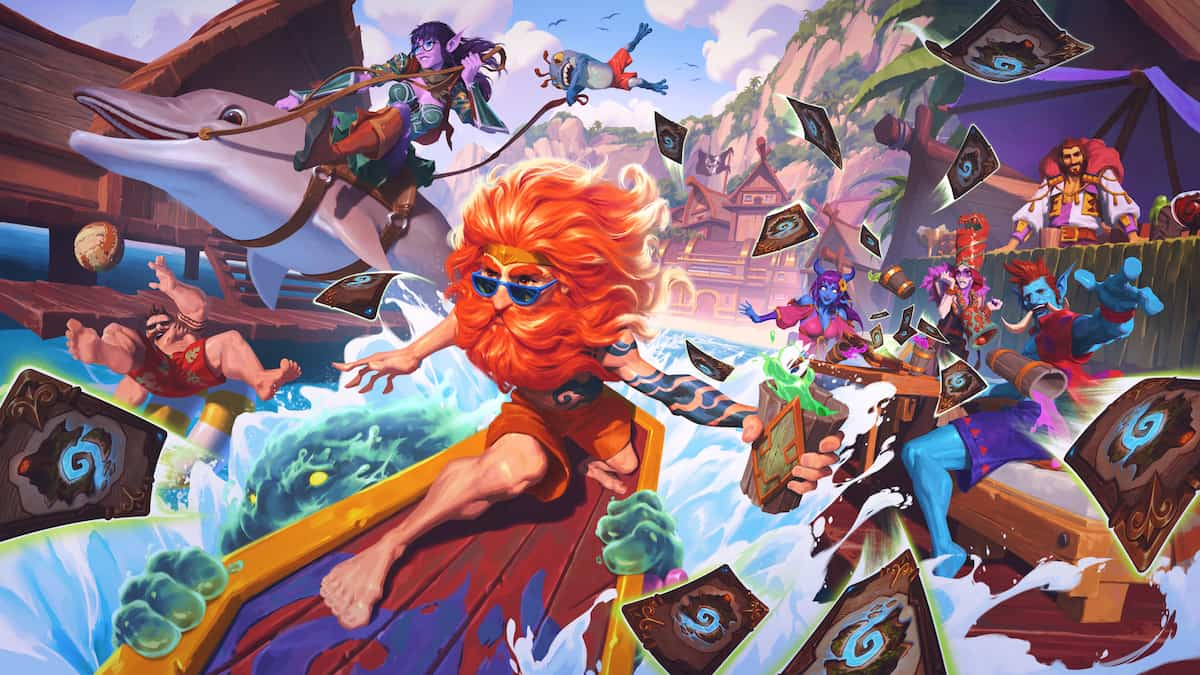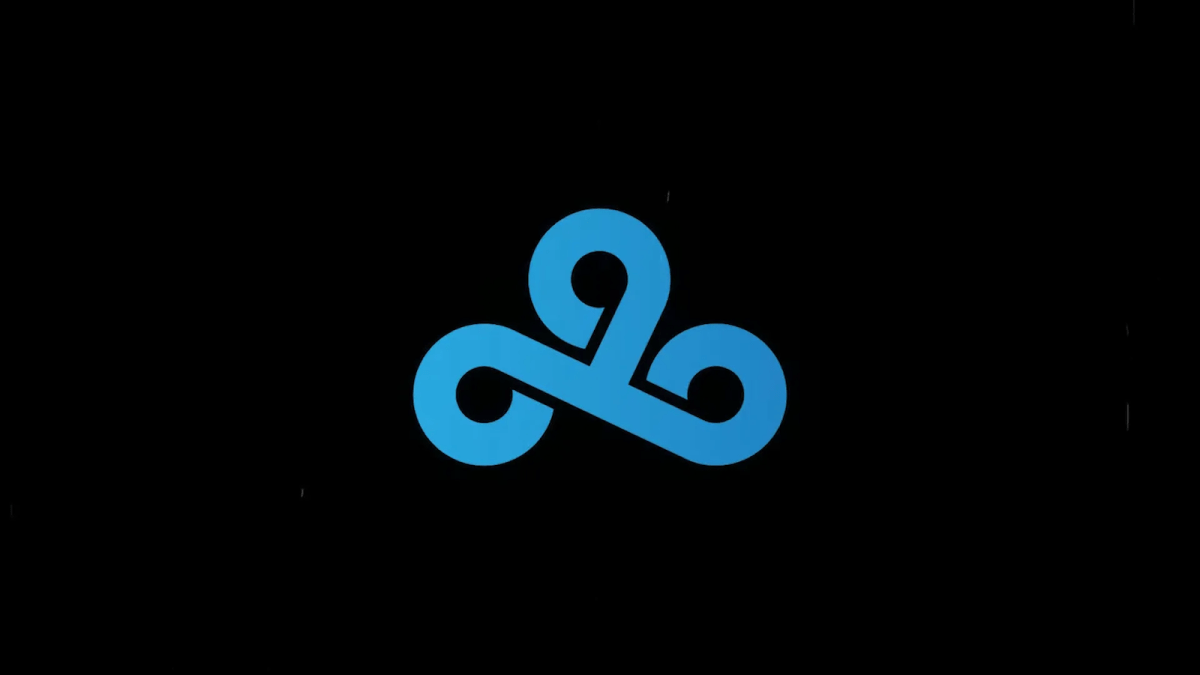Introduction
This week we are going to once again ask ourselves the question, how do you target a meta? There is a wide range of different overarching themes we cover in looking at ways to get ahead in this game. Sometimes we talk about versatility, sometimes we talk about deck building, and sometimes we talk about the meta. This week, we’re going to look at silver bullet lists that hedge their bets by focusing on countering the most popular decks in the game. The deck here is a new version of Miracle Rogue J4CKIECHAN took to top 50 legend. While the deck still has problems with hyper-aggression, it shines against some of the most popular decks around. What more could you want?
Key Cards
Shadowstep
There is only one Shadowstep in this deck, but it has quite a bit of utility. Tempo Rogue has proven that the once-overlooked zero mana spell comes with many applications, and that versatility is on full display here. There are very few minions in this deck, and almost all of them work extremely well with step. If you’re in a slower game where you’re going to need a lot of burst, Leeroy Jenkins should be your primary target. However, against board-centric builds, bouncing an Elven Minstrel, Vilespine Slayer, or Fal’dorei Strider can be a great way to build up a board or keep your opponent off your back. This is a trick you are only going to be able to pull off once, which means you want to be careful and about how and when to pull the trigger.
One of the most interesting uses for this card is hitting a Gadgetzan Auctioneer in order to set up a giant miracle turn. Your goal is to draw as many cards as possible, and sometimes that isn’t going to be easy. Maybe your opponent has a lot of removal, or maybe you simply don’t have enough mana to properly cycle. Putting the goblin down, drawing a card (maybe even making a spider) and then picking it back up is a great way to set up a gigantic draw your next turn. You are typically going to only do that when you have played some striders and need to dig, but it can put the finishing touches on a game fast if you aren’t under a ton of pressure. Something else to think about is picking up a smaller minion in order to set up a future combo. This is one of the trickiest Shadowstep uses to see, but getting an Elven Minstrel or Vilespine Slayer on curve can be invaluable.
Cold Blood
A forever underrated part of Miracle Rogue is Cold Blood. In order to adapt to the new world, you need to make changes. While this deck relies on a slow-but-powerful engine, it also needs some extra burst to put certain decks away. Fal’dorei Strider is the main way you push against board-focused decks, but Cold Blood on top of Leeroy Jenkins is typically how you close out the slow ones. Being able to use your grinder finisher against faster decks and a quick finisher against slower ones is a great amount of versatility that you can use to mold to each game.
Do not look at Cold Blood as a finisher. That is something that can be hard to do, but using the card to push through damage can be extremely useful in a wide range of situations. Many players see the one mana spell as a strict game-ender, and they will hold off until they can use it to kill their opponent so they don’t “waste” it. However, four damage is four damage, especially in a world there is no healing. You do not want to just play this as soon as possible, but also realize when you can get a good push. On that note, this card can also be used to trade up. This is rarely going to be your path, but there are times where you need to reclaim the board, push to set up your bigger finishers, or are under a lot of pressure. In those situations, if you don’t have removal, Cold Blood can fill in the slot. However, that is going to almost always be a last resort option.
Sap
There have been many different Miracle Rogue builds running around Hearthstone over the years, and one of the cards that constantly switches back-and-forth in those decks is Sap. This card dropped wildly out of Miracle Rogue’s favor in the past, then it crept back before dropping off again. The reason for that variability is because, while the two mana spell does very little against faster builds, it is amazing against slower decks. It is a must-have in today’s game because of Voidlord. While many aggro decks that run things like Spellbreaker or Sunkeeper Tarim to handle the 3/9, you have no way to get through it on board. That is an important aspect to note against all decks that have big taunts because if you miss an opportunity to use your 4/4’s before they get cleared you basically waste a win condition. Holding back Sap for when your opponent gets ready to put up a wall can instantly give you lethal.
Sap is one of the strongest cards in your deck because, in a lot of ways, it is better than hard removal. The ability to completely negate a card and get rid of its deathrattle is extremely powerful (as is the case with Voidlord). However, not every deck you face is going to have an easy-to-pick-out target. Something that comes up quite a bit as a Rogue player is that you come under a lot of pressure very quickly. Do not be afraid to use this card to simply reset something that presents a lot of damage, or on a early body that represents a lot of damage. It may not feel good to send a Murloc Warleader or a Misha back to your opponent’s hand, but taking someone off their curve can stall them until you get all of your pieces in order.
Fal’dorei Strider
The namesake of the entire deck, Fal’dorei Strider is an insanely powerful card that gives Miracle Rogue two strong win conditions. You can always lean on Leeroy Jenkins to crush your opponent or burst them down when you have a window. However, being able to create an army of 4/4’s is also strong because, unlike most cards, you don’t need to put in any work to get value. In that way, the four drop makes it so drawing cards, which Miracle is completely built around, is your win condition. It doesn’t get much better than that. All of your cantrips can instantly give your board presence, and every single card draw could come with instant priority or pressure. You are going to win many games off of the 4/4, especially once you get Gadgetzan Auctioneer going. The goblin drawing you a good chunk of your is going to take down a lot of games on its own, but when those draws also produces 4/4 spiders you have a real winner. Unless you absolutely need to remove a threat, you should try to get to strider as soon as you can. The value may not come until your later turns, but you never know when a 4/4 is going to pop out of your deck.
Card Draw
Card draw is one of the most powerful things you can do in any card game. Here, it is essential. Almost all of the cards in this deck have two uses, and choosing the right mode is extremely important when figuring out the correct path to victory. For example, getting use out of Fan of Knives as AOE is important, but if you have a weak hand or a slow draw you typically want to pull the trigger early just to move through your deck. The same thing goes with cards like Shiv and Bloodmage Thalnos. People always want to squeeze as much value out of each card as they can, but doing so in a world as fast as this one (or one filled with Corridor Creepers) is never going to be a good idea. You cannot sit on weak or bad hands.
There are two different factors that are going to affect your card draw: Gadgetzan Auctioneer and Fal’dorei Strider. When it comes to the strider, your goal should be to get as many spiders onto the board as possible. While the general rule is to always prioritize draw when you have a weak hand, if you’re playing to the four drop, then you should hold back spells for when you shuffle some ambushes into your deck. The same rule applies to if you’re playing to Auctioneer. Card draw is important, but you also need it for when you go all-in on the goblin. You never want to get to turn six with nothing to do.
Deck Code
AAECAYO6AgayAu0CrwTtBZG8A oHCAgy0AYwCzQO9BJsFiAekB4YJk rYC9bsC3NEC2+MCAA==
Matchups
The four decks I see the most while playing the ladder.
Priest
Number one of the two main reasons to play this list, Priest continues its incredible dominance. Razakus appears to be more popular at the high ranks, with Big Spell Priest being more common at all other levels. As with past Rogue decks, you are going to do well when facing Anduin. Priest’s engine is powerful, but they are also a few turns slower than you. The goal against either version is to get to six as soon as you can and then draw, draw, draw. Even without Strider, being able to get your whole deck will enable you to set up mini combos and pressure your opponent right out of the game. You cannot afford to take your time against Anduin. Your main advantage in this matchup is your speed, and you want to lean on that as much as possible. Get Priest onto the back foot and then stack more and more pressure.
Your spiders are incredibly important when it comes to beating Big Spell Priest. While the 4/4’s also do a solid job against Razakus, most of the time they’re going to get cleared by AOE before they can do any real damage. However, as Big Spell Priest has no ways to contest a wide board, you want to press towards them as soon as you can. Getting one or two 4/4’s alongside a must-kill threat like Gadgetzan Auctioneer is something that Big Spell is just not equipped to deal with. Make sure to keep a lid on them during the first three or four turns and then strike. Also, regardless of what Priest deck you’re facing, always take an opportunity to coin out a turn two Edwin Vancleef.
Control Warlock
Reason number two to play this build, Gul’dan continues to streak across all parts of the ladder. Cubelock is still the most popular version by far, but there is a good amount of Gnome Control as well. The reason you have such a powerful advantage against Warlock is because your 4/4’s are fantastic against their removal (nice Hellfire, bro). Do not let your opponent breathe here. Cubelock only needs a small window to go off. If they are not worried about dying, they will use their Carnivorous Cube/Dark Pact combo to completely blow you out of the game. Sap is very strong in this one, but make sure you use it after your opponent gets their demon from Possessed Lackey (otherwise they will simply replay the five drop next turn). Also, while bouncing a Doomguard may seem like a strong play, killing it is always better because your opponent can always replay it when they need extra pressure.
As good as Fal’dorei Strider is going to be in this matchup, your finisher is almost always going to be Leeroy Jenkins. The way you win this match is by using every non-Leeroy card in your deck to exhaust your opponent’s resources and keep their big threats at bay. Once they are out of options they will have to use their turn playing a big, high-cost threat in order to not die. You always want to set that up, because it means you can easily combine Sap with burst to close out the game. If your opponent is not under pressure they will have a lot of room to operate and not depend on an easily-removed wall. It is your job to force them into that corner.
Aggro Paladin
There is always one. Aggro Paladin feasts on Rogue decks, and this game is going to be a bloodbath. Your goal here is to get out early so you can simply stall during the middle turns until you can get your engine going. Paladin’s advantage here is their ability to get out early, but they also don’t have too many defensive options. That means if you can pressure them or push hard you should be able to kill them before they kill you. The goal of this game is to get priority. That means, unless you are under extreme pressure or have to kill something like a Knife Juggler, you need to use your threats to go face and stack up damage. Even if it is a bluff, making your opponent worry about their health is a great way to buy some extra breathing room. Build up large threats as fast as possible, such as going all-in on an early Edwin Vancleef, and swing in whenever you have a window.
Fan of Knives is going to be your best card in this one. Your opponent’s plan is to swarm the board as many times as possible. Knowing the right way to respond to each push is always key. The general rule is to always treat fan as a last resort. It is very easy to get big eyes and immediately pull the trigger once your opponent plops down a few minions, but if you can clear the board in other ways, you should. You have answers to one big minion. It is the board of small threats that is going to kill you. Don’t get too trigger happy with your removal. In order to win this one you need to be able to survive your opponent’s first push, then hold back the swarm as you set up your own finishers. If you can make it to the middle turns with a reasonable amount of health you should be ok. Just watch out for buffs and always be prepared to handle Call to Arms.
Tempo Rogue
Another tough game, you want to treat Tempo Rogue as a mirror. However, not as in that your opponent is a mirror of you, but that you are a mirror of them. You have to be extremely aggressive in this game if you want to win. Clear liberally with your spells and do everything that you can to get bodies down onto the board. If your opponent ever gets two or three minions ahead of you it is going to be extremely hard (nearly impossible) to come back. In fact, unlike other fast decks, once Tempo Rogue gets ahead they won’t worry about taking damage because they always can finish off games with their own burst. That is problematic, and gives you a lot of issues as things get more heated. Never get comfortable in this one and trade as much as possible. If you know how your opponent pushes ahead on the board (Bonemare, Corridor Creeper, etc.) then you will also be able to counter it. Note that, like Big Spell Priest, Tempo Rogue has no removal spells. You need to push for your striders as soon as you possibly can. All it takes is two or three spiders to instantly turn the game in your favor.
Mulligan Guide
When mulliganing with Miracle Rogue you typically need to find any early minions and removal that help build into your later combos. Backstab, Swashburglar and Shiv are the only must-keep options that are strong against all decks. However, Bloodmage Thalnos is great with early removal against aggro, and you always want Sap when facing Warlock. Eviscerate and Fan of Knives should always be kept against aggro, and Edwin Vancleef should always be kept with the coin. Elven Minstrel and Fal’dorei Strider are both great when you can curve into them, and you always want to keep Strider against slower decks.
Conclusion
Tired or Warlock and Priest? I know I am. This deck may not be exactly what the doctor ordered, but it does a great job of making my stomach feel better. Enough medicine puns? Fine. The point is, I’m always looking for ways to break a meta. While sometimes that looks like a versatile deck that is good against everything, other times it simply means a build that takes out the top. That is what we have here today. If you want to get back to Rogue roots and climb at the same time, this is the list for you. Until next time, may you always draw triple Ambush on turn five.





Published: Jan 29, 2018 10:15 am